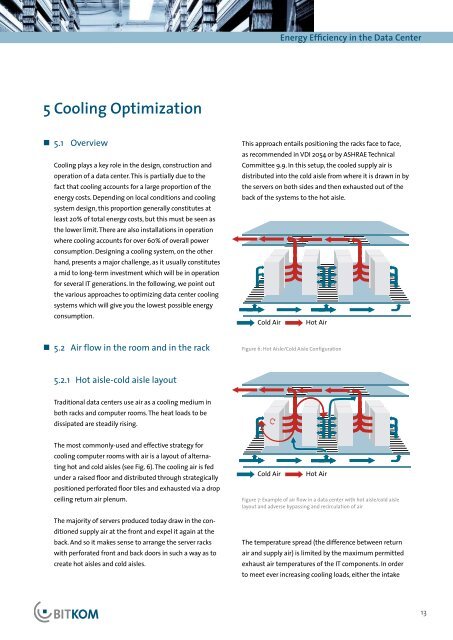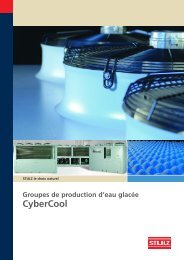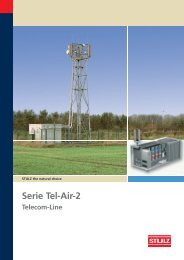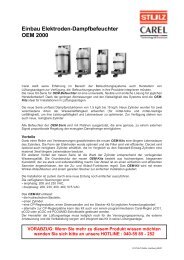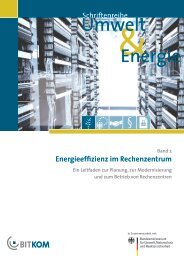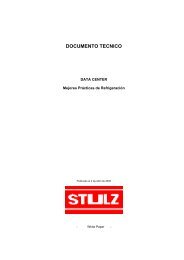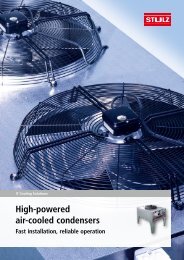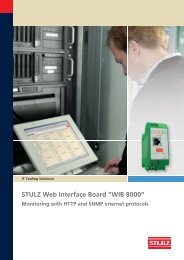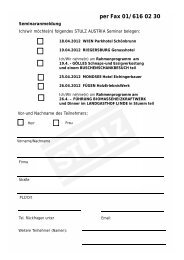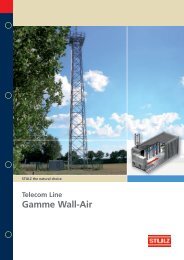Climate protection needs energy efficient data centers - Stulz GmbH
Climate protection needs energy efficient data centers - Stulz GmbH
Climate protection needs energy efficient data centers - Stulz GmbH
You also want an ePaper? Increase the reach of your titles
YUMPU automatically turns print PDFs into web optimized ePapers that Google loves.
Energy Efficiency in the Data Center5 Cooling Optimization• 5.1 OverviewCooling plays a key role in the design, construction andoperation of a <strong>data</strong> center. This is partially due to thefact that cooling accounts for a large proportion of the<strong>energy</strong> costs. Depending on local conditions and coolingsystem design, this proportion generally constitutes atleast 20% of total <strong>energy</strong> costs, but this must be seen asthe lower limit. There are also installations in operationwhere cooling accounts for over 60% of overall powerconsumption. Designing a cooling system, on the otherhand, presents a major challenge, as it usually constitutesa mid to long-term investment which will be in operationfor several IT generations. In the following, we point outthe various approaches to optimizing <strong>data</strong> center coolingsystems which will give you the lowest possible <strong>energy</strong>consumption.This approach entails positioning the racks face to face,as recommended in VDI 2054 or by ASHRAE TechnicalCommittee 9.9. In this setup, the cooled supply air isdistributed into the cold aisle from where it is drawn in bythe servers on both sides and then exhausted out of theback of the systems to the hot aisle.Cold Air Hot Air• 5.2 Air flow in the room and in the rackFigure 6: Hot Aisle/Cold Aisle Configuration5.2.1 Hot aisle-cold aisle layoutTraditional <strong>data</strong> <strong>centers</strong> use air as a cooling medium inboth racks and computer rooms. The heat loads to bedissipated are steadily rising.The most commonly-used and effective strategy forcooling computer rooms with air is a layout of alternatinghot and cold aisles (see Fig. 6). The cooling air is fedunder a raised floor and distributed through strategicallypositioned perforated floor tiles and exhausted via a dropceiling return air plenum.The majority of servers produced today draw in the conditionedsupply air at the front and expel it again at theback. And so it makes sense to arrange the server rackswith perforated front and back doors in such a way as tocreate hot aisles and cold aisles.Cold AirHot AirFigure 7: Example of air flow in a <strong>data</strong> center with hot aisle/cold aislelayout and adverse bypassing and recirculation of airThe temperature spread (the difference between returnair and supply air) is limited by the maximum permittedexhaust air temperatures of the IT components. In orderto meet ever increasing cooling loads, either the intake13


